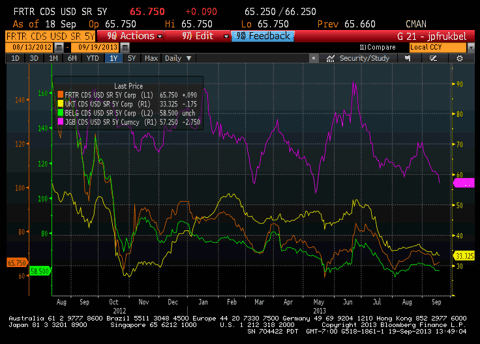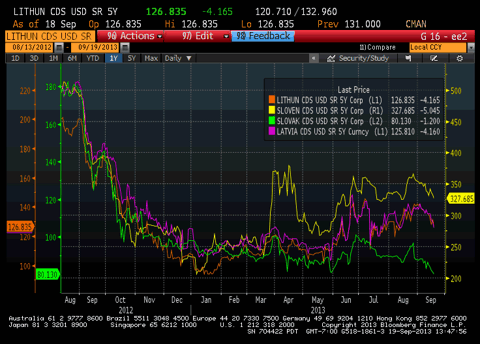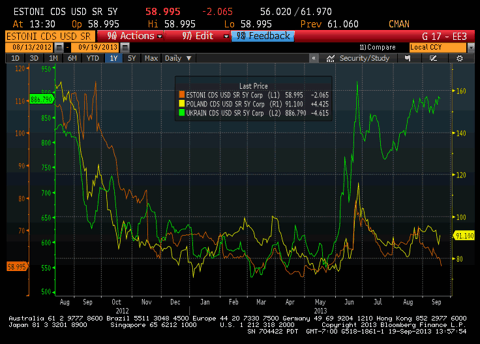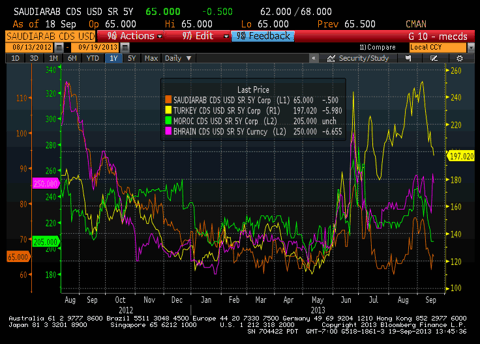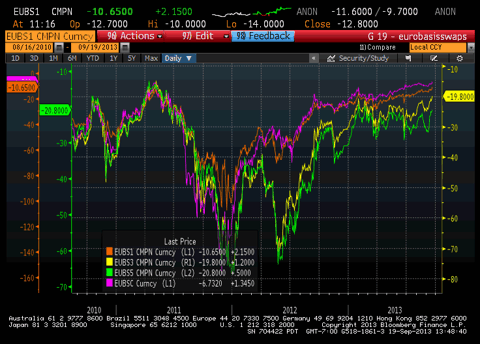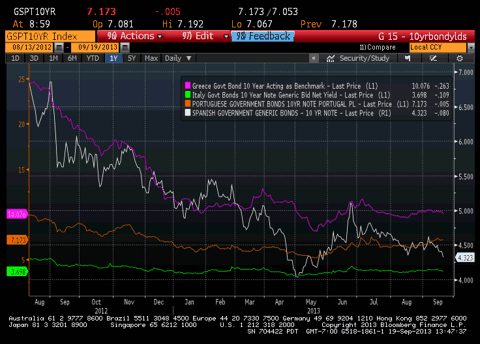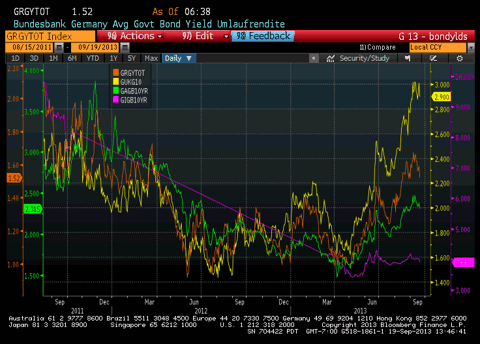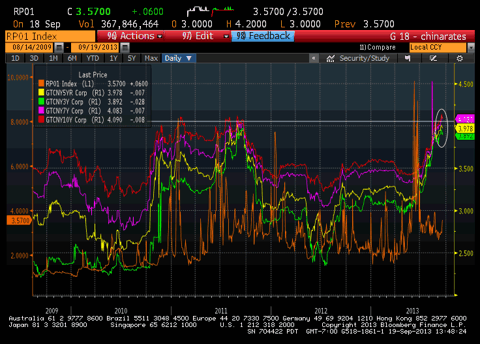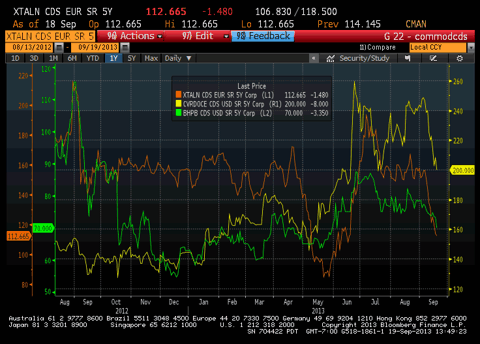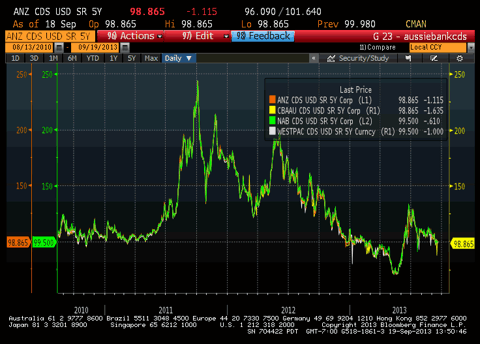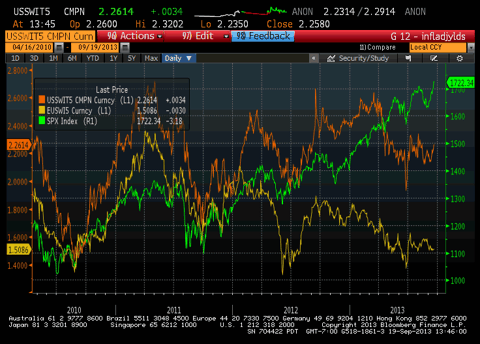The increase of U.S. oil production in non-traditional oil-producing regions, combined with the lack of pipeline infrastructure in those same areas, has triggered a modern-day railroad boom. While energy investors might focus on the midstream companies and refiners that are adding rail cars and unloading facilities to their operations, traditional railroad companies are experiencing the boom as well. In this video, Fool.com contributor Aimee Duffy takes a break from discussing rail and her favorite energy companies to talk with Tyler Crowe about a more traditional player.
Domestic oil and gas service companies have taken a hit in the recent past because of a slowdown in the natural gas drilling boom of the past couple of years. As this market looks to rebound, investors would be wise to consider Halliburton, one of the top companies in the business and one of those most in tune with the domestic market. To access The Motley Fool's new premium research report on this industry stalwart, simply click here now and learn everything you need to know about how Halliburton is positioning itself both at home and abroad.
Best Energy Stocks To Invest In 2014: Caiterra International Energy Corp (CTI.V)
CaiTerra International Energy Corporation (Caiterra), formerly Cyterra Capital Corp., is a Canada-based company is engaged in the exploration and development of oil and gas properties. The Company�� project includes Faust, Amadou and Lac La Biche. On March 9, 2012, the Company completed its qualifying transaction with West Pacific Petroleum Inc. (WPP), pursuant to which the Company acquired all of WPP�� working interests in certain petroleum and natural gas leases and an oil sand lease in the Lac La Biche and Amadou Projects located in Alberta, Canada and certain other assets (the QT Oil and Gas Properties) from West Pacific Petroleum Inc. (WPP). On December 17, 2012 the Company acquired the Faust Property located just north of the Swan Hills oil field and south of the Town of Slave Lake.
Best Energy Stocks To Invest In 2014: Southern Union Company(SUG)
Southern Union Company, together with its subsidiaries, engages in the gathering, processing, transportation, storage, and distribution of natural gas in the United States. It operates in three segments: Transportation and Storage, Gathering and Processing, and Distribution. The Transportation and Storage segment engages in the interstate transportation and storage of natural gas in the Midwest and from the Gulf Coast to Florida. It also provides liquefied natural gas (LNG) terminalling and regasification services. The Gathering and Processing segment involves in gathering, treating, processing, and redelivering natural gas and natural gas liquids (NGLs) in Texas and New Mexico. It operates a network of approximately 5,500 miles of natural gas and NGL pipelines, 4 cryogenic processing plants with a combined capacity of 415 MMcf/d, and 5 natural gas treating plants with a combined capacity of 585 MMcf/d. The Distribution segment engages in the local distribution of natural gas in Missouri and Massachusetts. This segment serves residential, commercial, and industrial customers through local distribution systems. The company was founded in 1932 and is based in Houston, Texas.
Halcon Resources Corporation (Halcon Resources), incorporated on February 5, 2004, is an independent energy company focused on the acquisition, production, exploration and development of onshore liquids-rich oil and natural gas assets in the United States. The Company has oil and natural gas reserves located primarily in Texas, North Dakota, Louisiana, Oklahoma and Montana. On August 1, 2012, the Company acquired GeoResources by merger. On December 6, 2012, the Company completed the acquisition of entities owning approximately 81,000 net acres prospective for the Bakken / Three Forks formations primarily located in Williams, Mountrail, McKenzie and Dunn Counties, North Dakota (the Williston Basin Assets), from Petro-Hunt, L.L.C. and Pillar Energy, LLC (the Petro-Hunt parties). As of December 31, 2012, the Company has working interests in approximately 128,000 net acres prospective for the Bakken / Three Forks formations in North Dakota and Montana.
The Company�� Woodbine / Eagle Ford acreage is prospective for the Woodbine, Eagle Ford and other formations, with targeted depths ranging anywhere from 7,000 feet to 10,400 feet. As of December 31, 2012, The Company has approximately 198,000 net acres leased or under contract primarily in Leon, Madison, Grimes, Brazos, and Polk Counties, Texas. The Company is the operator and has a 100% working interest in more than 12,000 net acres in Wichita and Wilbarger Counties, Texas that it is actively water flooding in shallow Cisco aged Pennsylvania sandstone and limestone reservoirs. As of December 31, 2012, the Company produced 484 million barrels of oil equivalent from approximately 700 active producing wells and approximately 230 active water injection wells.
The Company�� position in the La Copita Field covers 3,720 gross acres and 2,829 net acres in Starr County, Texas. As of December 31, 2012, the Company�� average net daily production was 623 barrels of oil equivalent per day. The Company operates 100% of this production a! nd its working interest ranges from 75% to 100%. The Company has various other oil and natural gas properties with varying working interests located across the United States, including the Austin Chalk Trend and Eagle Ford Shale in Texas, the Fitts-Allen Fields in Central Oklahoma, and various other areas across South Louisiana, Montana, North Dakota, New Mexico, and West Virginia.
Advisors' Opinion: Best Energy Stocks To Invest In 2014: American Petro-Hunter Inc (AAPH)
American Petro-Hunter Inc., incorporated on January 24, 1996, is an oil and natural gases exploration and production company with projects in Kansas and Oklahoma. As of March 15, 2012, the Company has two producing wells in Kansas and six producing wells in Oklahoma. The Company also has rights for the exploration and production of oil and gas on an aggregate of approximately 6,230 acres in those states. On January 4, 2011, the Company announced plans to drill the NOS227 Well as a direct offset to the NOJ26 Well.
On March 25, 2011, the Company announced that the Company had acquired a working interest in an additional 2,000 acres located in Payne County in northern Oklahoma, near the Company�� Yale Prospect. The project has been named North Oklahoma Mississippi Lime Project. On May 16, 2011, the Company announced that drilling operations had commenced at the Company�� first horizontal well, NOM1H. The Company owns a 25% Working Interest in the lease. On June 29, 2011, the Company announced that NOM1H had begun commercial production. On July 18, 2011, the Company announced drilling plans for a total of 11 horizontal wells at the North Oklahoma Project. On July 20, 2011, the Company announced the acquisition of a 40% working interest in the South Oklahoma Project on 3,000 acres of land in south-central Oklahoma.
On February 6, 2012, the Company announced that the Company had drilled a total of 1,988 feet in the horizontal well segment penetrating into the 100 plus foot thick Mississippi pay zone. As of March 2012, there are nine locations left to drill on the acreage. The Company's crude oil production is sold to N.C.R.A. in MacPherson Kansas and Sunoco in Oklahoma. The Company sells natural gas through such pipeline to DCP Midstream, LP of Tulsa, Oklahoma.
Best Energy Stocks To Invest In 2014: Occidental Petroleum Corporation(OXY)
Occidental Petroleum Corporation, together with its subsidiaries, operates as an oil and gas exploration and production company primarily in the United States. The company operates in three segments: Oil and Gas; Chemical; and Midstream, Marketing, and Other. The Oil and Gas segment explores for, develops, produces, and markets crude oil, natural gas liquids, and condensate and natural gas. Its domestic oil and gas operations are located in Texas, New Mexico, California, Kansas, Oklahoma, Utah, Colorado, North Dakota, and West Virginia; and international oil and gas operations are located in Bahrain, Bolivia, Colombia, Iraq, Libya, Oman, Qatar, the United Arab Emirates, and Yemen. As of December 31, 2010, this segment had proved reserves of approximately 3,363 million barrels of oil equivalent. The Chemical segment manufactures and markets basic chemicals, including chlorine, caustic soda, chlorinated organics, potassium chemicals, and ethylene dichloride products; vinyls, such as vinyl chloride monomer and polyvinyl chloride; and other chemicals comprising chlorinated isocyanurates, resorcinol, sodium silicates, and calcium chloride products. The Midstream, Marketing, and Other segment gathers, treats, processes, transports, stores, purchases, and markets crude oil that includes natural gas liquids and condensate, as well as natural gas and carbon dioxide. This segment also involves in the power generation; and trades around its assets comprising pipelines and storage capacity, as well as oil and gas, other commodities, and commodity-related securities. Occidental Petroleum Corporation was founded in 1920 and is based in Los Angeles, California.
Advisors' Opinion: - [By Federico Zaldua]
Occidental Petroleum (OXY), just bought by George Soros for his family-owned hedge fund, is more highly leveraged into oil than most of its large exploration and production (E&P) peers. That said, the company presented slightly disappointing quarterly earnings. Earnings were down 4% from a year ago and 7% sequentially despite the good results at the oil and gas division. Nevertheless, the future performance of the stock will mainly depend on what the board decides about corporate restructuring.
- [By Elliott Gue, Editor and Publisher, The Capitalist Times]
Steve Halpern: You point out that one company that is benefiting from our rising oil prices is Occidental Petroleum (OXY) and you mentioned that you see break out potential for the firm to unlock some value. Could you share your thoughts on that?
Best Energy Stocks To Invest In 2014: Canadian Solar Inc.(CSIQ)
Canadian Solar Inc. engages in the design, development, manufacture, and sale of solar power products in Canada and internationally. The company offers solar cell and solar module products that convert sunlight into electricity for various uses. Its products include a range of standard solar modules for use in a range of residential, commercial, and industrial solar power generation systems. The company also designs and produces specialty solar modules and products consisting of customized modules that its customers incorporate into their products, such as solar-powered bus stop lighting; and specialty products, such as portable solar home systems and solar-powered car battery chargers. In addition, it sells solar system kits, a package consisting of solar modules produced by it and third party supplied components, such as inverters, racking system, and other accessories, as well as implements solar power development projects. The company sells its products under the Canad ian Solar brand name. Canadian Solar Inc. offers its standard solar modules through a direct sales force and sales agents primarily to distributors, system integrators, and original equipment manufacturer customers, as well as to solar projects; and specialty solar modules and products to the automotive, telecommunications, and light-emitting diode lighting sectors. The company was founded in 2001 and is based in Kitchener, Canada.
Advisors' Opinion: - [By Paul Ausick]
As prices for solar panels and modules stabilize, stocks in the solar energy companies have once more put on a growth spurt. Since the beginning of the year shares of SunPower Corp. (NASDAQ: SPWR) are up more than 300% and shares of China�� Canadian Solar Co. Ltd. (NASDAQ: CSIQ) are up nearly as much. Industry consolidation is not a far-fetched notion any longer.
- [By Paul Ausick]
We have tracked the short interest in the following North American Solar companies as of September 13: Canadian Solar Inc. (NASDAQ: CSIQ), First Solar Inc. (NASDAQ: FSLR), GT Advanced Technologies Inc. (NASDAQ: GTAT), SunEdison Inc. (NYSE: SUNE) and SunPower Corp. (NASDAQ: SPWR).




 Reading the Table OV/UN Valued: Stocks with a red number are undervalued by this percentage. Those with a black number are overvalued by that percentage according to ValuEngine. VE Rating: A "1-engine" rating is a strong sell, a "2-engine" rating is a sell, a "3-engine" rating is a hold, a "4-engine" rating is a buy and a "5-engine" rating is a strong buy. Last 12-Month Return (%): Stocks with a red number declined by that percentage over the last 12 months. Stocks with a black number increased by that percentage. Forecast 1-Year Return: Stocks with a red number are projected to decline by that percentage over the next 12 months. Stocks with a black number in the table are projected to move higher by that percentage over the next 12 months. Value Level: Price at which to enter a GTC limit order to buy on weakness. The letters mean; W-weekly, M-monthly, Q-quarterly, S-semiannual and A-annual. Pivot: A level between a value level and risky level that should be a magnet during the time frame noted. Risky Level: Price at which to enter a GTC limit order to sell on strength.
Reading the Table OV/UN Valued: Stocks with a red number are undervalued by this percentage. Those with a black number are overvalued by that percentage according to ValuEngine. VE Rating: A "1-engine" rating is a strong sell, a "2-engine" rating is a sell, a "3-engine" rating is a hold, a "4-engine" rating is a buy and a "5-engine" rating is a strong buy. Last 12-Month Return (%): Stocks with a red number declined by that percentage over the last 12 months. Stocks with a black number increased by that percentage. Forecast 1-Year Return: Stocks with a red number are projected to decline by that percentage over the next 12 months. Stocks with a black number in the table are projected to move higher by that percentage over the next 12 months. Value Level: Price at which to enter a GTC limit order to buy on weakness. The letters mean; W-weekly, M-monthly, Q-quarterly, S-semiannual and A-annual. Pivot: A level between a value level and risky level that should be a magnet during the time frame noted. Risky Level: Price at which to enter a GTC limit order to sell on strength.